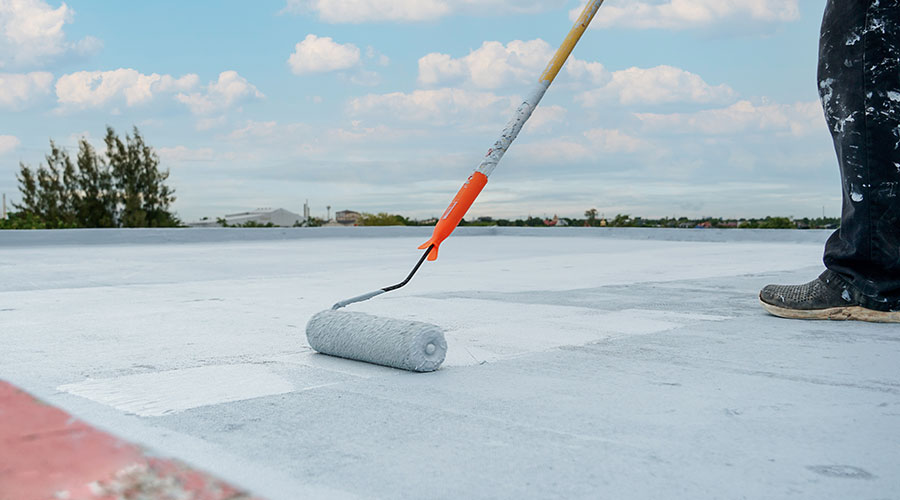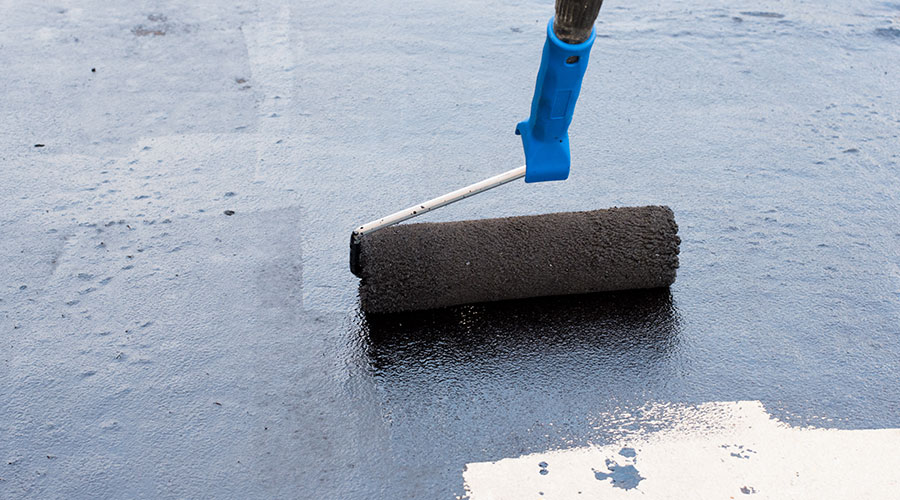Strategies for Preventing Roof Coating Problems
Roof coatings can deliver important benefits to institutional and commercial buildings, including protecting the facility and its contents, extending the performance life of the roof, and lowering the facility's cooling load. Unfortunately, problems can crop up in the life of roof coatings that minimize their potential benefits.
By understanding the most common problems related to roof coating specification and use, maintenance and engineering managers can gain insights on preventing these problems and addressing them should they occur. While this information focuses mostly on acrylic coatings, it also will touch on asphalt, styrene ethylbutlyene styrene (SEBS), emulsions, and other coatings. It is not intended to cover coatings systems that can be used to make site-installed membrane systems.
Roof Maintenance
The application of a roof coating is not an inadequate substitute for structural repairs at the roof surface. But not every roof provides a good maintenance opportunity. For example, roofs with wet insulation, rotting or corroded decks, or a fractured or brittle existing membrane might not be good candidates for coating applications. While coatings can extend the service life of an aging roof system, managers should not use them to avoid more fundamental maintenance needs.
Failed protrusion flashings and boots, bent edge metal, missing cants, and separated seams often are best corrected by replacing the original assembly or repairing the problem area with original materials. For a difficult repair, a specialized roof coating, such as a high-tensile or fabric-reinforced product, might make sense. But basic roofing practice dictates that a coating's primary role is to extend the service life of the underlying roof.
Focus On The Surface
An elastomeric roof coating cannot offset poor surface preparation. Solvent-based materials tend to be more tolerant than water-based products over loose scale, chalk, and debris. But if a coating fails due to poor preparation, it will leave a permanent record underneath the coating. Managers can consider three simple tests to determine the state of the roof surface.
First, it is a good idea to perform a duct tape test on the roof membrane. Place the tape over the surface to see if the surface has loose material. If the tape removes loose material after several tests, the substrate is not sound, and the best product is a solvent-based primer or basecoat.
Second, on concrete, perform a water-drop test. If the surface beads water, a water-based material is not likely to bond and needs a stronger preparation method.
Third, for moisture, managers should not rely simply on surface tests because it is essential to know about trapped moisture. Instead, use duct tape to put down a piece of plastic — typically 2 feet by 4 feet — on the surface to see what will happen when the coating is applied. A water-based product can tolerate some moisture, but a tighter coating, such as an SEBS or urethane, will blister. Even more permeable coatings, such as silicones and acrylics, will have problems with trapped moisture.
Related Topics:














